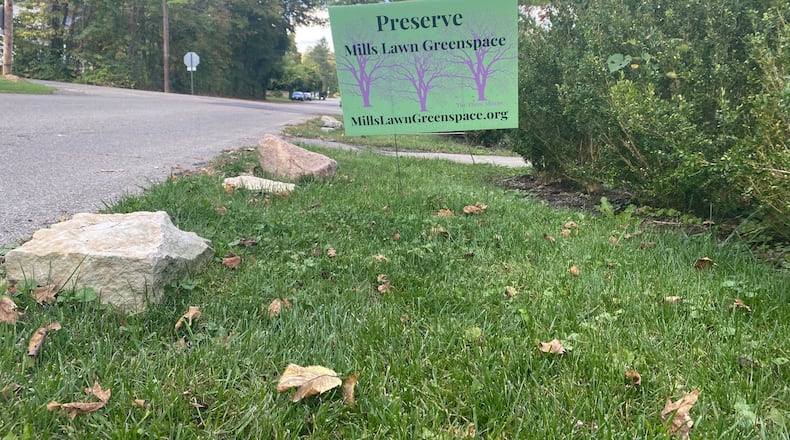Yellow Springs superintendent Terri Holden and school board president Steve Conn said there are no plans to sell the Mills Lawn Elementary School or the land surrounding it, which is in the middle of the village.
“There is no sale, there is no developer, there is no destruction,” Conn said. “I have no idea what these people are talking about. There is no threat to that property. None. Zero. Zip.”
The district has said if the school’s proposed 6.5-mill property tax and 0.5% income tax, estimated to raise about $23 million, passes, the district wants to move the location of the elementary school from the center of town to the current location of the high school and turn the high school into a combined K-12 school. Then, the district would have to decide what to do with the Mills Lawn school.
Three separate assessments done in the last few years say the cost to fix Mills Lawn Elementary School and the Yellow Springs high school and middle school building would be more than 66% of the cost to build a new building, the standard Ohio uses to determine whether a building should be fixed or replaced.
Terry Smith, one of the founding members of Preserve Mills Lawn Greenspace, said the issue is not with the school levy. He said the issue came after the school board paid to have an assessment done on the school in 2019 that looked at the possible use of the space for housing.
Conn said the schools paid for that study because during the last school levy discussion in 2018, villagers asked how much the property the schools had was worth. Yellow Springs voters rejected a 4.5-mill levy that would have generated about $18.5 million for new school construction and renovation in 2018.
Available housing stock has become a more significant problem in Yellow Springs in the past few years, as the available homes are both older and more expensive.
The village has a population of 3,487 people and has 1,805 housing units, according to 2010 Census data.
Village councilwoman Laura Curliss’s letter to council on the issue, dated Sept. 16 and included in the Sept. 20 village council packet, included the phrase “putting the greenspace on a trajectory that will end in bulldozers and chainsaws on our Village Green.” That statement was part of why the rest of the council chose to censure her last week, according to the resolution censuring her. The statement is inaccurate, the village council and Conn said.
Curliss is up for reelection in November.
Antioch College gave what was then the Miami Twp. schools the land without restrictions officially in the spring of 1949, but in a letter dated Dec. 22, 1948, to the school board, the college said it was interested in the land being used, “for any non-commercial purposes which will promote the welfare of the community generally.” Preserve Mills Lawn has pointed to that letter as a reason to keep the space open to the public and preserved.
Smith said the Preserve Mills Lawn group does not have a stance for or against the levy. He said he was upset with people who are tying together the Mills Lawn group and voting against the levy.
“These people are patently incorrect, and we have tried to straighten that out from the moment we first heard that and they continue to say it,” he said.
Whatever happens to the levy doesn’t affect the group’s central argument, he said.
“Our main goal is, we want the city council and the school board to work together to ensure that Mills Lawn stays a public green space, if that school should ever get relocated, leaving it at that,” Smith said. “That sounds pretty darn simple to me.”
He said when the group called school board members, they would “get very little response” other than the school board members, “saying if something ever happens, it’s our fiduciary responsibility to move this land at the highest bidder or something like that,” Smith said.
Smith said the discussion around Mills Lawn began in 2019, but Conn said the issue may have started even earlier, possibly before the last school levy was proposed.
The village’s schools have committed to having a public conversation with residents about what would be best to do with the property, Conn said, but after the election, when the schools know if they will still need the school.
The district has not made any commitments to keep the space open and green because there isn’t anything to decide until after the election, said Holden.
“Can we have conversation now? Yes,” Holden said. “Conversation, which is not decision making.”
About the Author





